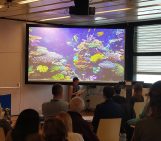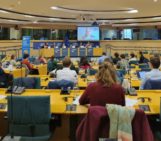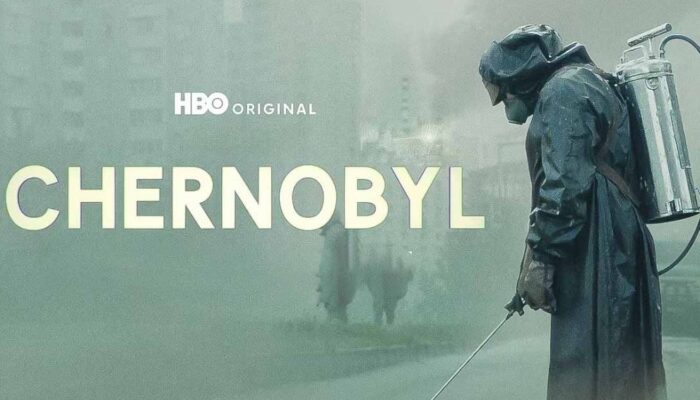
The HBO and Sky UK television series Chernobyl is a historical drama that explores the events leading up to and following the 1986 Chernobyl nuclear disaster in Pripyat Ukraine. Not only does this series focus on one of the worst nuclear accidents in history, but also on the challenges and successes of one of the lead scientists involved in communicating the scientific evidence to key decision-makers. This month’s blog post will outline some of key principles that were highlighted during the series that researchers can reflect on and incorporate into their own policy engagement.
An important note: While the disaster that happened at the Chernobyl Nuclear Power Plant reactor was a real catastrophic event, this blog post solely focuses on examples shown in the dramatized television series Chernobyl rather than critiquing the actual historical events or people involved.
How does the 2019 Chernobyl series relate to science advice?
The 2019 Chernobyl series is largely told from the dramatized perspective of Valery Legasov, a real-life scientist and expert in nuclear chemistry whose contributions directly following the explosion of at the Chernobyl nuclear power plant were crucial in understanding why the disaster occurred and how to minimise its impact. Each of the five episodes within the series focus on different aspects of the explosion, its aftermath, and how the event was perceived by decision-makers, the public, and the scientific community.
Throughout the series, there are numerous examples of science advice being provided under extremely high-stakes conditions. While not as shocking as other moments in the series, the decisions made during these scenes ultimately determine the outcome and total damage caused by the reactor explosion. Through these scenes, the series emphasises the importance of science advice and realistically depicts some of the issues that scientists face when engaging with decision-makers. While most science-policy interactions occur in less extreme circumstances, many of the overarching challenges portrayed in the series may be familiar to those who work on the science-policy interface, albeit to a lesser extent. Below are some key principles that were highlighted during the 2019 Chernobyl series that researchers can reflect on and incorporate into their own policy engagement.
The importance of understanding the political landscape
To ensure the science advice that we provide is relevant and useful, it’s vital to understand the political landscape in which it is being given. This enables those engaging with policy to recognise the priorities of different policymakers and stakeholder groups, build impactful coalitions, anticipate challenges, and provide information when and where it’s needed. While all these aspects are seen throughout the Chernobyl series, the scientists involved have the additional challenge of working within what was depicted as an extremely hierarchical and corrupt political system, that aims to strictly control the flow of information.
The series depicts Legasov as someone who learnt to work within the political structure that he had available to him but it also showed his discomfort and frustration at doing so.
Perhaps I’ve been spending too long in my lab but is this really how it all works? Someone makes an arbitrary decision about something, based on nothing, that will cost who knows how many lives?
Legasov is obviously working in an extreme situation and not one that most scientists will ever have to consider when engaging with scientific advisory mechanisms. However, the frustration and sentiments he expresses with regards to understanding and working within political landscapes are likely to have resonated with some of the series’ scientific audience.
Framing the scientific evidence
Communicating information to policymakers requires a different approach than communicating it to scientists or other experts. Science and policy communities have different cultures, languages, timeframes, challenges, and expectations. Bridging these gaps and learning how to work with and between these communities is a vital skill that will help you to effectively frame the evidence you’re communicating, ensuring that it is listened to, understood, remembered, and used.
During the first episode of the Chernobyl series, Legasov is invited to a meeting with Mikhail Gorbachev, the General Secretary of the Communist Party of the Soviet Union, “to answer direct questions about the reactor should they arise”. Despite being explicitly instructed to only answer direct questions and not to provide input on policy decisions, Legasov struggles to maintain his composure and starts giving technical details about the potential long-term consequences of the disaster. While this is completely understandable given the information that he has just received and the situation that he knows that they are facing, it results in the high-ranking policy officials in the room interrupting him with concerns about the political and economic implications of his findings. Given their positions, it’s clear that these officials are primarily concerned about public panic, international perception, and potential damage to the national image. As a result, instead of listening to the warning that Legasov is trying to provide, they reject his initial presentation and label him as an “alarmist”.
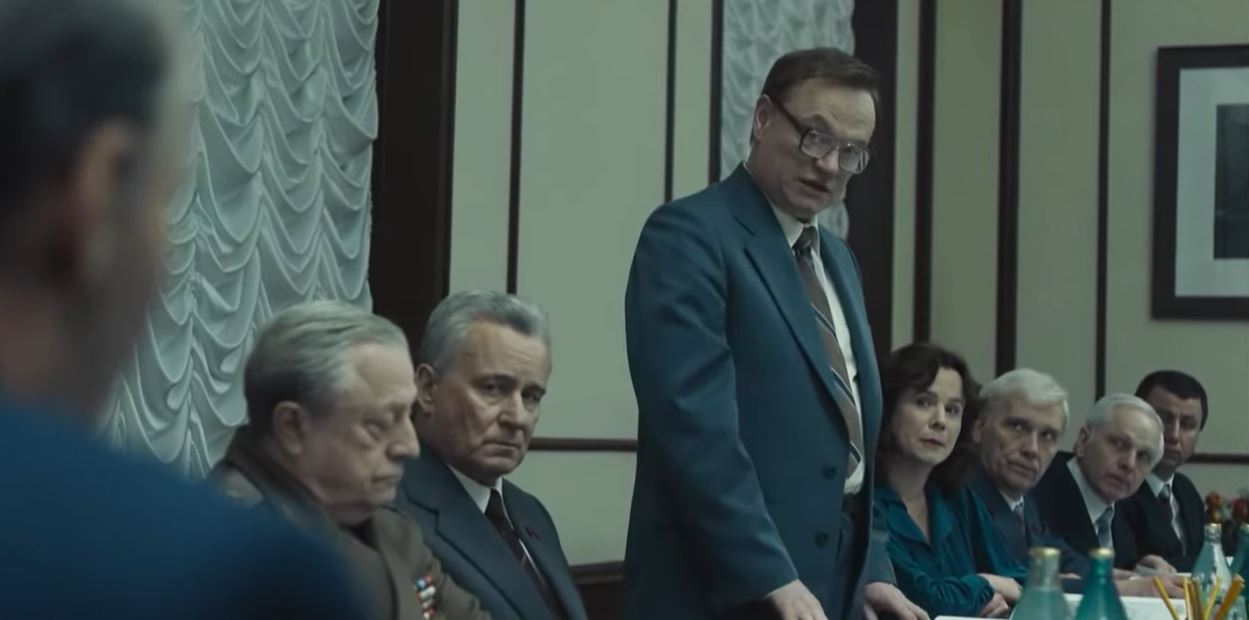
A screen shot from one of the political meetings during the 2019 Chernobyl series. © Home Box Office, Inc.
However, understanding how vital it is for the information to be heard, Legasov persists by reframing his message to resonate with those in the room. He clearly explains why the situation is likely to be far more catastrophic than initially believed, the potential consequences of inaction, and importantly, outlines measures that could be implemented to reduce the projected impact. While not everyone in the room is convinced, this reframing enables Legasov to remain in a position that enables him to continue providing useful scientific information and guide political decisions that ultimately minimise the impact of the catastrophe.
Providing science advice is a team sport
Working with a strong and diverse network when providing scientific advice ensures that the evidence used is being drawn from a wide pool of knowledge and incorporates multiple perspectives. Furthermore, it enables those providing science advice to have a broader overview of the political landscape and information needed, find areas of consensus, reduce duplication, and disseminate the relevant evidence more effectively.
The importance of this teamwork was demonstrated in several ways throughout the Chernobyl series. Ulana Khomyuk was created by the series to represent the numerous scientists that worked to uncover the cause of the Reactor 4 explosion. During the series, she and Legasov independently recognise the severity of the disaster and its potential consequences. As the series progresses, they join forces to gather evidence, exchange information, and consult with other experts to piece together the sequence of events that led up to the explosion. However, despite their shared expertise and information, Legasov and Khomyuk would not have been able to put their knowledge to use on their own.
Boris Shcherbina, a government official who is initially sceptical of the severity of the disaster and Legasov’s expertise, becomes a key resource and team member in later episodes, supporting Legasov and Khomyuk by pushing for evidence-informed policies and ensuring that they have the resources they need. Legasov gains Shcherbina’s trust by providing clear answers to his questions, engaging in problem-solving discussions, offering practical solutions, transparently outlining the situation’s uncertainties, and willingly collaborating with different groups. Legasov also grows to appreciate Shcherbina’s willingness to use the information he’s providing, as well as his ability to deal with crisis situations and communicate the necessary directions and instructions,
There are other scientists like me. Any one of them could have done what I did. But you… everything we asked for, everything we needed; men, material, lunar rovers. Who else could have done these things? They heard me, but they listened to you.
By working together as a team, the series’ protagonists are not only able to identify the positive feedback loop that caused the disaster but reduce the total damage of the reactor explosion. Furthermore, they ensure that the global scientific community knows about how the explosion happened so that they can prevent it from happening in the future.
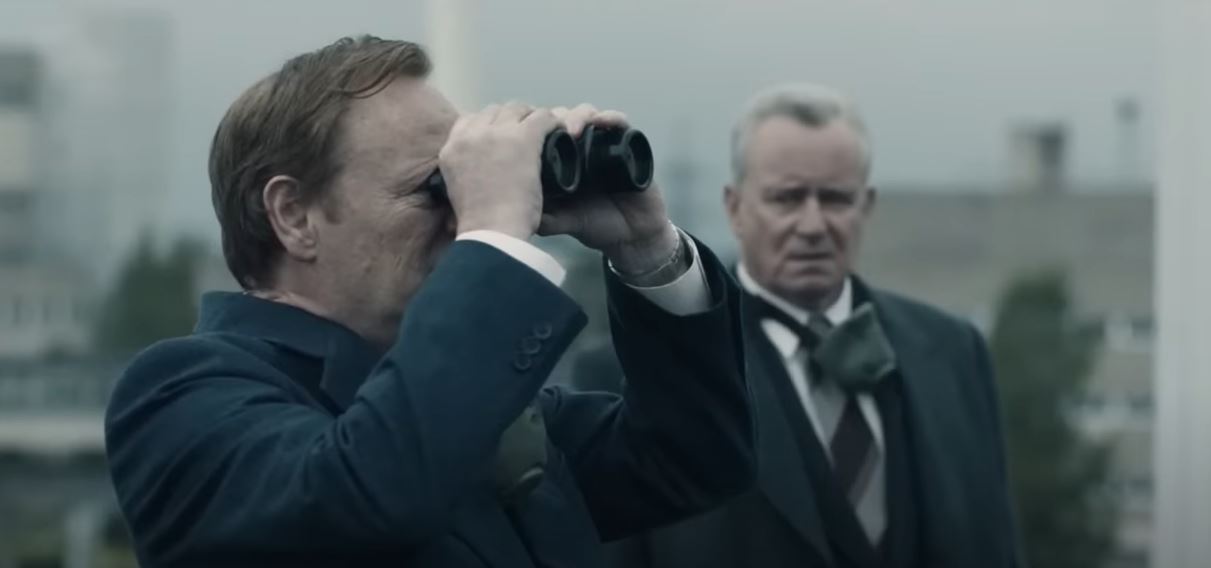
A screen short from the 2019 Chernobyl series showing Legasov and Shcherbina working together. © Home Box Office, Inc.
While the events depicted throughout the Chernobyl series are extreme, it constrains numerous profound take-home messages about science advice that scientists can reflect on. This blog post highlights just a few but if you’re a fan of the series, you can add your own key messages in the comments below. Please also feel free to suggest another fictional film, television series, or book that you’d like to see analysed from a science advice and science for policy perspective!

